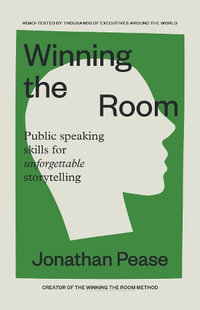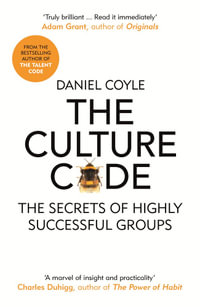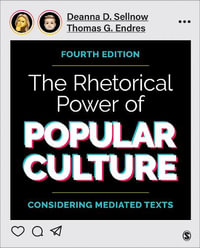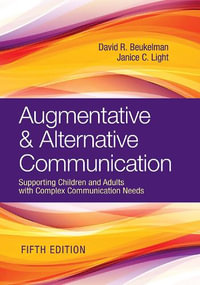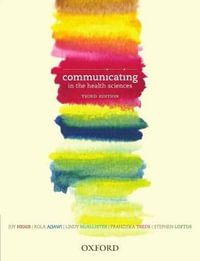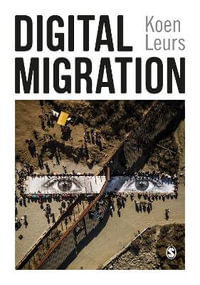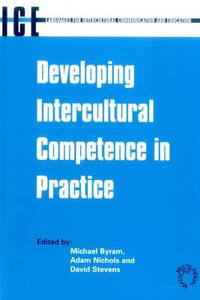Part 1: Communication Reviews and Commentaries 1. Media Linkages Between Culture and Other Societal Systems Karl Erik Rosengren 2. When Majorities Talk About Minorities Teun A. Van Dijk 3. Male-Female Communication on the Job: Literature Review and Commentary Gail T. Fairhurst 4. Criticizing Press Coverage of the War in Lebanon: Toward a Paradigm of News as Storytelling Itzhak Roeh and Sharon Ashley 5. Communication Skills and Childhood Peer Relationships: An Overview Brant R. Burleson 6. Pornography and Sexual Aggression: A Social Learning Theory Analysis James V. P. Check and Neil M. Malamuth 7. Interaction Processes and Outcomes in Interviews Richard L. Street, Jr 8. Mass Media Expenditures in Norway: The Principle of Relative Constancy Revisited Anita Werner 9. World News in Nigerian Newspapers Charles Okigbo 10. Electronic Leisure: Video Game Usage and the Communication Climate of Video Arcades Rolf T. Wigand, Steven E. Borstelmann and Franklin J Boster Part 2: Information Systems 11. Explaining Choice Shift: A Comparison of Competing Effects-Coded Models Michael E. Mayer 12. Group Communication Networking in an Information Environment: Applying Metric Multidimensional Scaling Ronald E. Rice and George A. Barnett 13. Analogies, Visualization, and Mental Processing of Science Stories Michael A. Shapiro Part 3: Interpersonal Communication 14. Violations of Distance Norms: Reciprocal and Compensatory Reactions for High and Low Self-Monitors Joseph N. Cappella 15. Deception Detection and Relationship Development: The Other Side of Trust Steven A. McCornack and Malcolm R. Parks 16. Situation Perception and Message Strategy Selection Michael J. Cody, John O. Greene, Peter J. Marston, H. Dan O'Hair, KevinT. Baaske and Michael J. Schneider Part 4: Mass Communication 17. Economic Barriers to Entering Media Industries in the United States Michael O. Wirth 18. A Semiotic Model for the Study of Mass Communication Donald L. Fry and Virginia H. Fry 19. Children's Perceptions of Moral Themes in Television Drama Peter Gilbert Christenson Part 5: Organizational Communication 20. Distortion of Communication in Hierarchical Relationships Janet Fulk and Sirish Mani 21. Quality Circles and Changing Patterns of Communication Cynthia Stohl 22. Persuading the Adjudicator: Conflict Tactics in the Grievance Procedure Elizabeth A. Martin and Louis P. Cusella Part 6: Intercultural and Development Communication 23. The Influence of Language on Uncertainty Reduction: An Exploratory Study of Japanese-Japanese and Japanese-North American Interactions William B. Gudykunst, Tsukasa Nishida, Hiroko Koike and Nobuo Shiino 24. Culture and Gender: Effects on Assertive Behaviour and Communication Competence Mary Jane Collier 25. Information Sources and Images of the United States and Japan: A Q-study of Adult Jordanian Males Douglas A. Boyd 26. Cognitive Complexity and Intercultural Effectiveness: Perceptions in American-Japanese Dyads Richard L. Wiseman and Hiroko Abe Part 7: Political Communication 27. Media Use, Interpersonal Communication, and Political Socialization: An Interactional Model Analysis Using LISREL Cheng Kuo 28. Mass Media and Political Decision Making: Application to the Accumulated Information Model to the 1980 Presidential Election Steven H. Swindel and M. Mark Miller 29. Looking for Heteroscedasticity: A Means of Searching for Neglected Conditional Relationships David K. Perry Part 8: Instructional Communication 30. Children's Reasoning About Compliance-Resisting Behaviours Jeffrey S. McQuillen and Dorothy C. Higginbotham 31. Locus of Control as a Mediator: A Study of College Students' Reactions to Teachers' Attempts to Gain Compliance Robert A. Stewart, Patricia Kearney and Timothy G. Plax Part 9: Health Communication 32. Social Support Satisfaction and Health Locus of Control: Discriminators of Breast Cancer Patients' Styles of Coping Claire F. Sullivan and Kathleen K. Reardon 33. The Post Nuntio Dilemma: Approaches to Communicating with the Dying Vernon D. Miller and Mark L. Knapp Part 10. Philosophy of Communication 34. Communicative Irrationality and Political Discourse in Jurgen Habermas: A Theological Experiment Kyle A. Pasework 35. Philosophical Foundations for the Construction of Critical Knowledge Astrid Kersten Part 11: Human Communication Technology 36. Computer-Mediated Communication in an Organizational Setting: Explaining Task-Related and Socioemotional Uses Charles W. Steinfield 37. From Consumer to Organizational Videotex Applications: Will Videotex Find a Home at the Office? T. Andrew Finn and Concetta M. Stewart






